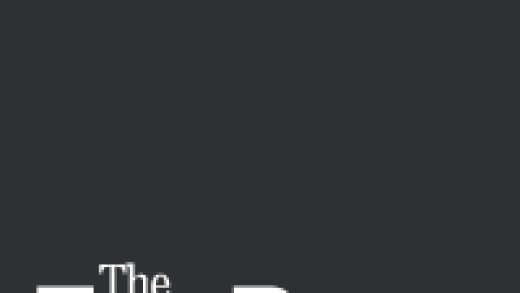
Religious education is set for an overhaul in schools, with an updated curriculum that better reflects Aotearoa’s diverse population. Gabrielle McCulloch reports.
For Ruby Pankhurst, religious instruction at school was mostly about how to be a good Christian woman.
In a class of five at a small Auckland faith-based school, she listened to group discussions about sexuality and women’s role in a household.
“There were ideas about a woman being submissive and inferior to men. I didn’t really care about it at the time, but looking back it’s weird,” she said.
READ MORE:
* It’s time to make consent a compulsory part of the school curriculum
* The unrecognised crisis of arts education in New Zealand
* Absences, curriculum changes and immigration settings stretch schools
Pankhurst didn’t learn much about other religions in her school, and when she did, it was always from the perspective that they were “wrong”.
“The fact that it was school made it a lot harder. These are young kids, and that kind of guidance – the authority dynamic – having something told to you by someone in the classroom … felt a little exploitative.”
Now 21, Pankhurst wishes her religious education was less instructive and more diverse, and she believes children should be given the opportunity to critically engage with different ideas.
“Religion shouldn’t be dictated to students, it should be an education. Like, ‘here’s this thing! You can ask your parents about it. It’s one of many out there’,” she said.
And there are “many out there”. Each year, Aotearoa is becoming increasingly religiously diverse.
LAWRENCE SMITH/Stuff
Ruby Pankhurst believes went to a religious school but believes students should have a more diverse religious education.
In the last census, Christianity lost its spot as New Zealand’s dominant belief system, falling second to those with no religious belief. Hinduism is next, followed by Islam, Buddhism and Sikhism.
Christianity is also increasingly diverse as immigration sparks growth in ethnic church communities like Samoan Catholicism and Korean Presbyterianism.
Abdur Razzak, from the New Zealand Muslim Association, called this diversification a “tapestry of New Zealand culture”.
“We need to have more understanding, not just of the Muslim faith, but of all faiths in New Zealand and of non-religious people as well,” he said.
Razzak is heading an education reform group to improve students’ understanding of Aotearoa’s religious and ethnic make-up.
“We want it to feel normal to have Muslims, Jews, Christians and non-believers all in the same classroom. There needs to be an understanding of a faith culture, so we don’t have this ‘othering’ of communities,” he said.
In 2019, a terrorist killed 51 people and injured 40 others at two Christchurch mosques. The mass shooting shocked New Zealand and sparked protests, law changes surrounding gun control and a royal commission enquiry.
Days after the attack, religious leaders from all faiths – including Christianity, Islam, Buddhism and Sikhism – sent a letter to Parliament, asking for “age-appropriate religious studies in all New Zealand schools”.
John Kirk-Anderson/Stuff
People gather during the National Memorial Service in Christchurch for the Mosque Shooting (file photo).
“We believe this will lead to a decrease in religious bigotry which in turn will mean less anti-social behaviour such as bullying, Islamophobia, and marginalisation,” the letter said.
In response to that call, from 2023 the school curriculum will include a focus on diverse religious studies in primary and intermediate schools.
The new content will be rolled into social science as part of a wider curriculum refresh.
Razzak, who has been consulting with the Government on the new curriculum, said religious minorities are still being met with violence and alienation.
Earlier this year, Hoda Al-Jamaa, a 17-year-old Otago schoolgirl, was attacked by three other pupils who ripped her hijab off and beat her.
The unprovoked assault saw her sent to hospital with a concussion.
SUPPLIED
Film-maker Taika Waititi has joined a campaign to give teachers more tools to identify and act on racism in the classroom. (First published May 2021)
“We have to give kids the tools to understand different faith and different cultures in NZ so it [the country] doesn’t resort to hate,” Razzak said.
“It’s not a matter of numbers. Even if it’s a small community, we still have to respect that they’re part of our history and culture.”
Ministry of Education spokesperson Ellen MacGregor-Reid said the refreshed primary and intermediate social science content will include religion and religious diversity.
At a secondary level, the ministry is still reviewing NCEA religious studies standards.
“One of the principles of the NCEA Change Programme is inclusion and equity whereby every student deserves the same high-quality learning opportunities to succeed,” MacGregor-Reid said.
The Government’s decisions were based on a report written by Professor Paul Morris, who specialises in religious studies and is also a member of the Religious Diversity Centre.
In his report, Morris recommended a shift away from privileging Christianity above other belief systems towards a more diverse religious studies curriculum.
“We live in a country that has rapidly changed in the last 50 years. Now, 10% of the population is religious but non-Christian, and roughly half our population has no religious affiliation,” Morris told Stuff.
Supplied
Paul Morris professor of religious studies and member of the religious diversity centre.
“We live in incredibly diverse cities. People’s neighbours – the people that are in your kids’ classrooms, the people you work with – are religiously diverse.
“In order to make sense of the world, we need to understand these different motivations, beliefs and practises,” Morris said.
Morris also looked at another element to religious education in state schools.
Since the establishment of New Zealand state schools, the classroom has been a secular space, with one notable exception: religious instruction.
The Education Act 1877 had a legal loophole, which allowed schools to ‘close’ during school hours for people to instruct children on their religion.
“Religious instruction harks back to the days when New Zealand was predominantly Christian, but now we belong to a multicultural multi-society, and we need to respect that diversity,” Morris said.
That loophole still exists and has created a history of Christian teaching and preaching in otherwise-secular state schools.
Stuff spoke with multiple families whose children faced bullying and ostracisation when they opted to remove their child from religious instruction such as Bible in Schools.
A law change in 2020 meant parents or guardians no longer had to write to the school if they did not wish for their child to attend religious instruction; instead, parents needed to opt their children in for such programmes.
Since the change, the number of schools offering religious instruction has declined, as has the number of complaints received by the Ministry of Education about religious teaching in schools.
Morris did not propose any changes to the legislation, but said there needs to be “a much greater level of transparency about religious instruction”.
There is, he said, a key difference between religious instruction, which seeks to promote certain beliefs, and religious studies, which take a neutral view on a diverse range of faith-based communities.
According to his report, 70% of participants were against religious instruction in schools, and 78% were supportive of religious studies.
“The alternative to not understanding religious and cultural differences is really dire,” he said. “The alternative is conflict.”
Penny Ehrhardt, chairperson of the Secular Education Network, also wants to see more transparency from religious instruction groups, and accountability.
“We need to monitor these groups to make sure children aren’t being discriminated against,” she said. “We need to know how LQBTQI kids feel participating in these [settings].”
Supplied
Chairperson of the Secular Education Network Penny Ehrhardt wants religious instruction out of schools.
Ehrhardt supports diverse religious studies in schools but is disappointed non-religious voices are being left out of the conversation.
“I think its absolutely vital that the Government includes [the] Secular Education Network and includes people who are non-religious at the centre of what they are doing,” Ehrhardt said.
“It’s about support for diversity; that can’t happen when excluding the largest group: those who have no religious belief.”
Ruby Pankhurst, remembering back to her small classroom, said every child deserves to respected and understood.
“People have different beliefs, and that’s important.”


